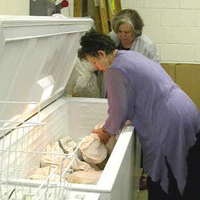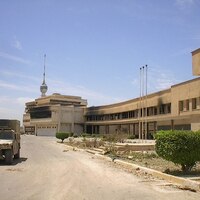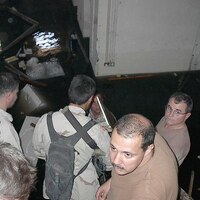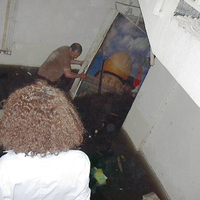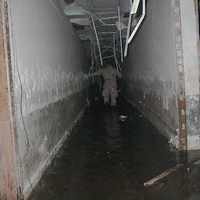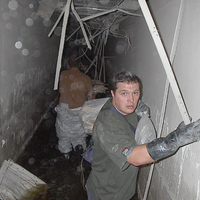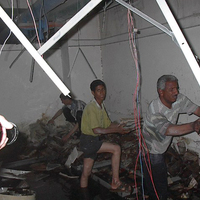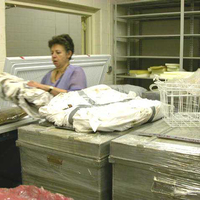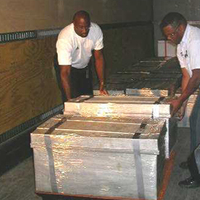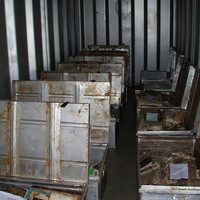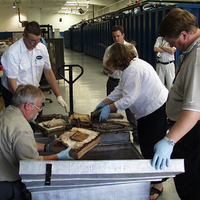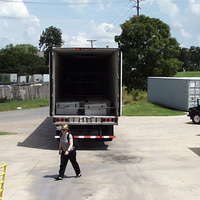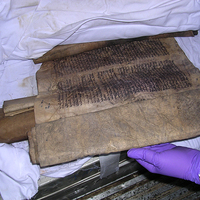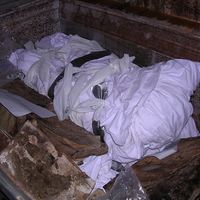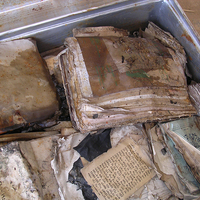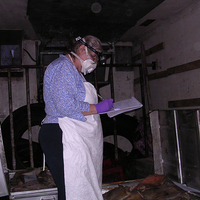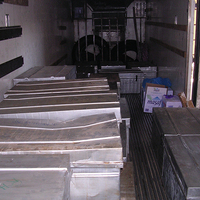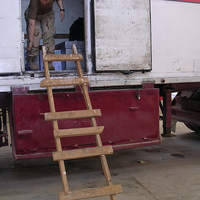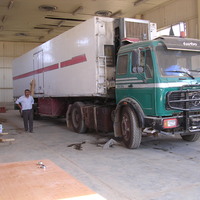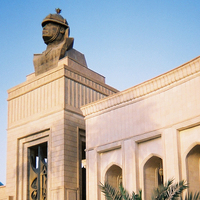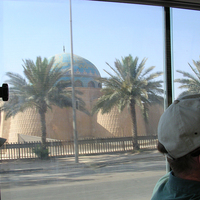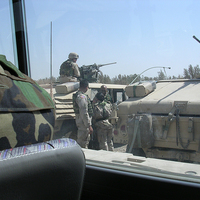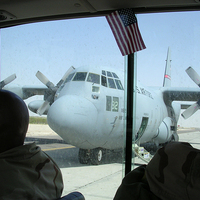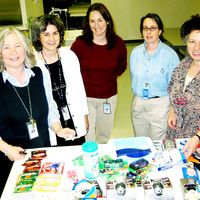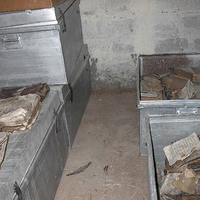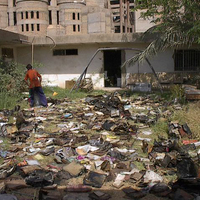Recovery of Artifacts
On May 6, 2003, just days after the coalition forces took control of Baghdad, American soldiers from the Mobile Exploitation Team Alpha found thousands of Jewish communal and religious books and documents under four feet of water in the flooded basement of Saddam Hussein’s intelligence building.
Once much of the water was drained, these books and documents were brought outdoors to dry. Unfortunately the wet materials quickly became moldy in Baghdad’s intense heat and humidity.
Seeking guidance in preserving the materials, the Coalition Provisional Authority placed an urgent request for assistance to the National Archives. They also secured a freezer truck to stabilize the materials and avoid further damage. Just over a week later, National Archives Director of Preservation Programs Doris Hamburg and Conservation Chief Mary Lynn Ritzenthaler arrived in Baghdad via military transport to assess the damage and make recommendations for preserving the books and documents.
Given limited treatment options in Baghdad, and with the agreement of Iraqi representatives, the materials were shipped frozen to the United States for preservation and exhibition.
Phase 1 Drying the Collection
A commercial vendor vacuum freeze-dried the frozen books and documents, which remained in their open metal transport trunks over the course of a month. Vacuum freeze-drying allowed the ice to sublime off the collection materials as vapor, meaning that the ice did not go through the liquid phase. The paper and books were left dry but in the same physical shape as they went in. The mold was rendered inactive, but was still a health hazard to people handling the materials.
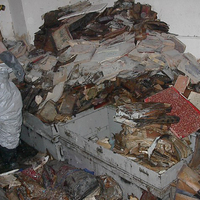
Jewish section of the Mukhabarat building - Jewish Section -with a large pile of waterlogged books 2003.
